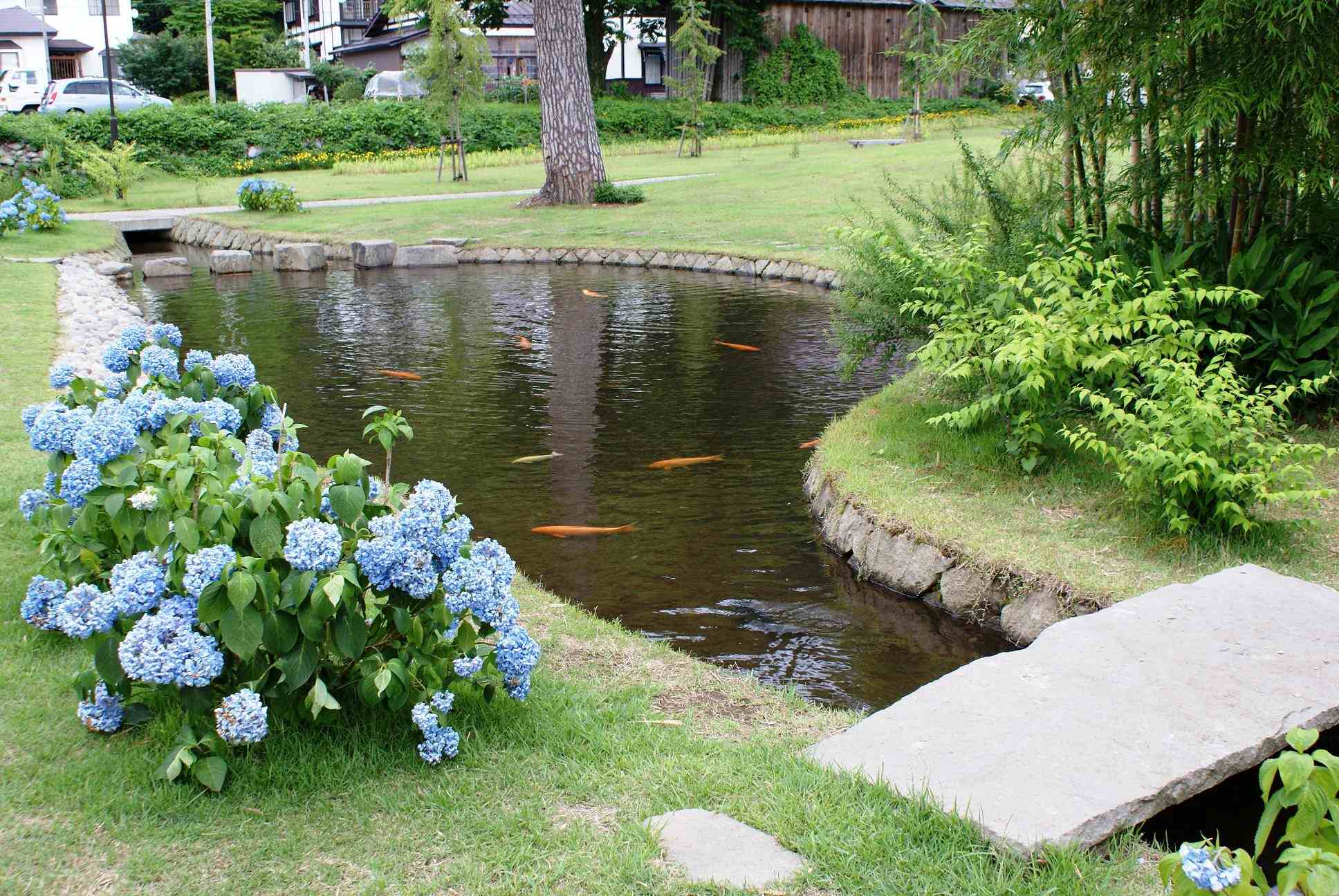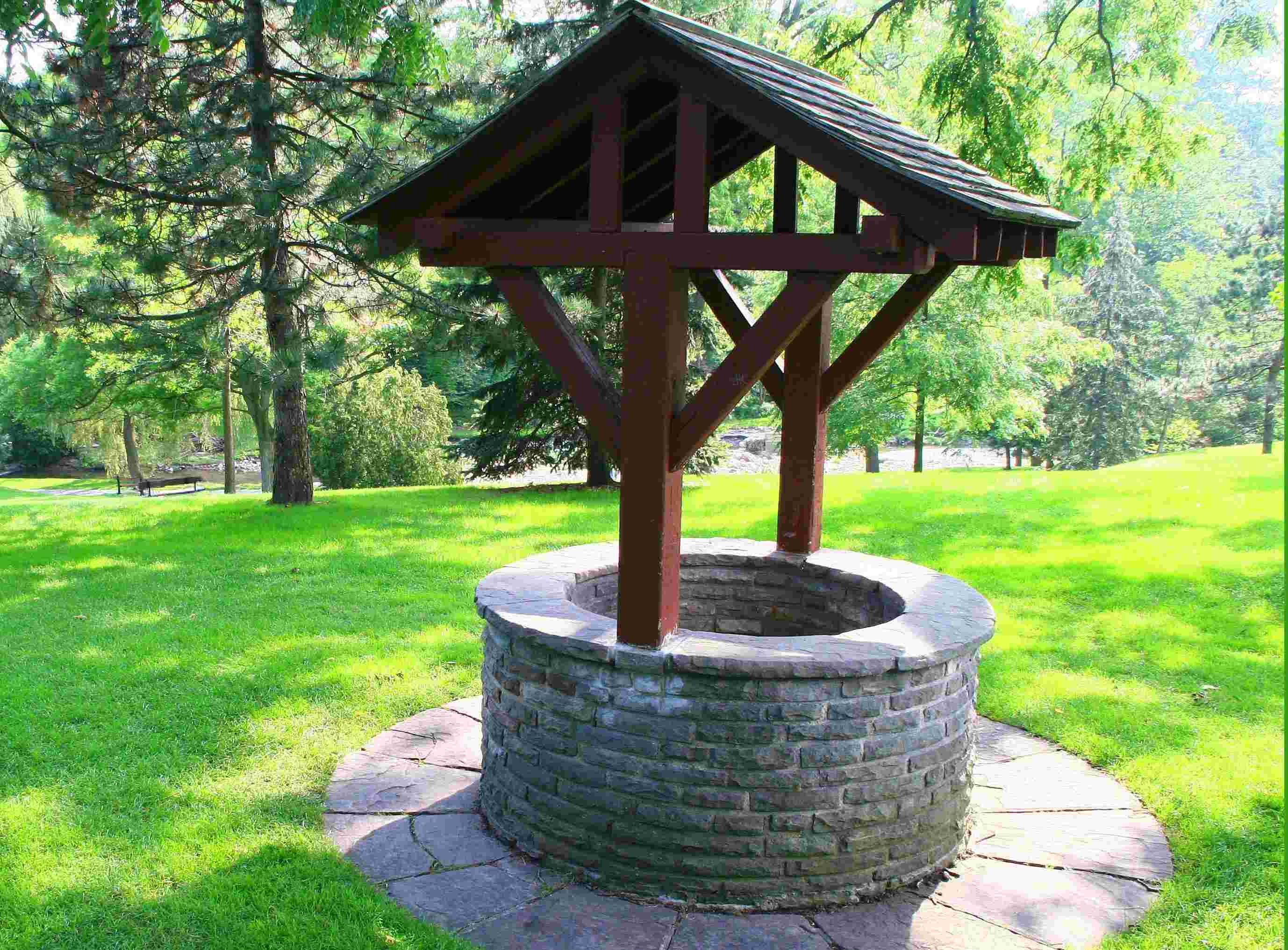Home>Types of Gardening>Edible Gardening>How To Raise Trout In Your Backyard


Edible Gardening
How To Raise Trout In Your Backyard
Modified: January 22, 2024
Learn how to combine your love for edible gardening with raising trout in your backyard. Discover expert tips and techniques for a successful and sustainable aquaponics system.
(Many of the links in this article redirect to a specific reviewed product. Your purchase of these products through affiliate links helps to generate commission for Chicagolandgardening.com, at no extra cost. Learn more)
Table of Contents
Introduction
Welcome to the world of edible gardening, where the joy of growing your own food knows no bounds. If you’re looking to take your gardening skills to the next level, why not consider venturing into the realm of raising trout in your own backyard? Not only is it a rewarding and sustainable hobby, but it also provides a source of fresh and delicious fish for your table. In this article, we’ll explore the ins and outs of setting up your own trout pond and share some tips on how to successfully raise trout at home.
There’s something incredibly satisfying about being able to harvest your own food, and raising trout allows you to do just that. With a little bit of planning and effort, you can create the ideal environment for these magnificent fish to thrive and provide you with a bountiful harvest.
Before we dive into the nitty-gritty details, it’s important to note that raising trout requires a significant commitment of time, resources, and knowledge. It’s not a venture suited for everyone, but if you’re willing to put in the work, the result can be incredibly rewarding.
Throughout this article, we’ll guide you through the process of creating a suitable habitat for your trout, providing them with the right nutrition, and maintaining optimal water quality. We’ll also address common issues that may arise and offer solutions to ensure the health and success of your trout.
Whether you’re a seasoned gardener looking to expand your horizons or a beginner eager to try something new, this article will provide you with the knowledge and guidance you need to embark on your edible gardening journey with trout. So, let’s get started and discover the wonders of raising trout in your own backyard.
Choosing a Suitable Location
When it comes to raising trout in your backyard, one of the first and most important steps is choosing the right location for your trout pond. The success of your venture largely depends on creating an environment that mimics the natural habitat of trout and provides them with the conditions they need to thrive.
Here are some key factors to consider when selecting a suitable location:
- Sunlight: Trout thrive in cool water, so it’s essential to choose a location that receives partial shade throughout the day. Direct sunlight can cause water temperatures to rise, which may stress the trout and affect their overall health.
- Access to Water: It’s important to have a reliable source of clean, freshwater for your trout pond. If your backyard doesn’t have access to a natural water source, you can consider installing a well or using a water delivery system to ensure a constant supply of fresh water.
- Size of the Pond: The size of your pond will depend on how many trout you plan to raise. It’s recommended to have at least 500 gallons of water per adult trout to provide ample space for swimming and growth. However, keep in mind that larger ponds require more maintenance and may have higher operating costs.
- Accessibility: Consider the accessibility of the location for maintenance tasks such as cleaning, feeding, and monitoring water quality. You’ll want to ensure easy access to the pond to make these tasks more manageable.
- Environmental Factors: Assess the overall environmental conditions of the area. Avoid locations near trees that shed a lot of leaves, as this can lead to excessive organic debris in the water. Additionally, avoid areas prone to flooding or heavy runoff, as it can negatively impact the water quality.
Once you’ve identified a suitable location, it’s time to move on to the next step: building your trout pond. Keep in mind that proper planning and preparation are key to creating a successful and sustainable habitat for your trout.
In the upcoming section, we’ll discuss the necessary steps and considerations when building your trout pond, so stay tuned!
Building a Trout Pond
Now that you’ve chosen a suitable location for your trout pond, it’s time to roll up your sleeves and start building! A well-designed and properly constructed pond will provide your trout with a comfortable and thriving habitat. Here are some steps to guide you through the process:
- Design and Planning: Start by sketching out the design of your pond, taking into consideration the available space, desired depth, and shape. A rectangular or oval shape is commonly used for trout ponds. You’ll also need to decide on the pond’s depth, which should be at least three to five feet to ensure stable water temperatures and provide hiding spots for the trout.
- Excavation: Once your design is finalized, it’s time to dig the pond. Ensure that the soil is compacted and remove any rocks or debris that may undermine the integrity of the pond. Pay attention to proper sloping to prevent erosion and to allow easy access for maintenance.
- Lining the Pond: To prevent water leakage, you’ll need to line the pond with a durable liner. PVC liners or rubber liners are commonly used and provide excellent waterproofing. Ensure the liner is properly secured and free of wrinkles or folds that may trap debris or interfere with the water flow.
- Water Supply and Filtration System: Establish a reliable water supply for your trout pond. Depending on your water source, you may need to install a filtration system to ensure clean and oxygenated water. This can include mechanical filters, biofilters, and aerators to maintain optimal water quality.
- Adding Substrate: Introduce a layer of substrate, such as gravel or rocks, to the bottom of the pond. This provides a natural habitat for beneficial bacteria and helps with nutrient cycling. Avoid using sharp or jagged rocks that could harm the trout.
- Introducing Fish: Before adding your trout, allow the pond to settle and stabilize for a few days. This will let the water temperature and chemistry stabilize. When introducing the trout, ensure a smooth transition by acclimating them to the water temperature and releasing them gently.
As trout are highly sensitive to changes in water quality, it’s crucial to regularly monitor and maintain the pond’s cleanliness. This includes removing any debris, monitoring oxygen levels, and testing water parameters such as pH and ammonia levels. Regular water changes may also be required to maintain optimal conditions for your trout.
Remember, building a trout pond is a significant investment of time and resources. Proper planning, construction, and ongoing maintenance are keys to creating a thriving environment for your trout. In the next section, we’ll delve into the essential aspect of water filtration and maintenance, which is crucial for the well-being of your fish.
Water Filtration and Maintenance
Ensuring clean and well-maintained water is essential for the health and growth of your trout. Implementing an effective water filtration and maintenance system is key to achieving optimal water quality. Here are some important considerations:
Filtration System: A filtration system helps remove debris, excess nutrients, and harmful substances from the water. There are three main types of filtration: mechanical, biological, and chemical. Mechanical filters physically remove solid particles, while biological filters use beneficial bacteria to break down organic waste. Chemical filtration, such as activated carbon, can help remove impurities and improve water clarity. Depending on the size of your trout pond, you may require a combination of these filters to maintain water quality.
Aeration: Adequate oxygen levels are crucial for the well-being of trout. Installing an aeration system, such as air stones or diffusers, ensures a constant supply of oxygen in the water. This helps prevent oxygen depletion, especially during hot summer months or in densely stocked ponds. Proper aeration also promotes the growth of beneficial bacteria, aids in nutrient cycling, and reduces the risk of harmful algal blooms.
Regular Testing: Monitoring the water parameters is vital to maintain proper water quality. Test the pH levels, ammonia, nitrite, and nitrate levels regularly using test kits designed for freshwater aquariums or ponds. This allows you to quickly identify any imbalances and take corrective action before they harm your trout. Aim for a pH range of 6.5-8.0 and ammonia and nitrite levels close to zero.
Water Changes: Regular water changes help dilute accumulated waste and maintain water quality. Aim to change 10-20% of the water volume every week or as needed. Use dechlorinated water and match the temperature with the pond water to minimize stress on the trout.
Algae Control: While some algae growth is normal and beneficial, excessive algae can disrupt the ecosystem balance. Control algae growth by maintaining proper nutrient levels and implementing measures such as UV sterilizers or algaecides, if necessary. Ensure that any treatments used are safe for trout and follow instructions carefully.
Debris Removal: Regularly remove leaves, twigs, and other debris that can accumulate in the pond. Decaying organic matter not only affects water quality but can also promote the growth of harmful bacteria or parasites. Use a pond skimmer or net to skim the surface and a pond vacuum to remove debris settled on the bottom.
Remember, maintaining water quality is an ongoing process. Regular monitoring, timely maintenance, and adjustments to the filtration system are necessary to ensure a healthy and vibrant environment for your trout. In the next section, we’ll discuss the importance of selecting the right trout species for your backyard pond.
Selecting the Right Trout Species
Choosing the appropriate trout species for your backyard pond is crucial to ensure their successful growth and adaptation to the environment. Different trout species have varying temperature requirements, growth rates, and tolerance to different water conditions. Here are some popular trout species to consider:
Rainbow Trout: Rainbow trout are one of the most popular choices for backyard ponds. They are known for their vibrant colors, fast growth rates, and adaptability to a wide range of water temperatures. Rainbow trout thrive in water temperatures between 55°F and 65°F (12°C to 18°C), making them well-suited for various regions.
Brook Trout: Brook trout are native to North America and prefer cooler water temperatures between 50°F and 60°F (10°C to 15°C). They are known for their beautiful markings and require clean, well-oxygenated water. Brook trout are generally slower-growing but are highly prized for their flavor.
Brown Trout: Brown trout are renowned for their elusive nature and challenging behavior. They prefer colder water temperatures ranging from 50°F to 60°F (10°C to 15°C). Brown trout can tolerate a wide range of water conditions and are known for their larger size, making them a favorite among anglers.
Cutthroat Trout: Cutthroat trout are native to Western North America and thrive in cooler mountain streams and lakes. They prefer water temperatures between 45°F and 60°F (7°C to 15°C) and require clean, well-oxygenated water. Cutthroat trout are known for their distinct red slash marks under their jaws.
When selecting a trout species, consider the water temperature and climate conditions of your region. Consult with local fish hatcheries or reputable trout suppliers to determine which trout species are best suited for your specific location. It’s important to ensure that the water temperature in your pond can support the chosen species’ needs throughout the year.
Additionally, take into account the size and growth potential of the trout species. If you have limited space or prefer smaller fish, species like brook trout or rainbow trout may be more suitable. However, if you have ample space and are looking for larger fish, brown trout or cutthroat trout may be better options.
Remember to check local regulations and obtain any necessary permits before introducing trout into your backyard pond. It’s crucial to follow all legal requirements to protect native fish populations and maintain ecosystem balance.
By carefully selecting the right trout species for your backyard pond, you set the stage for a successful and enjoyable trout-raising experience. In the next section, we’ll explore the importance of providing proper feeding and nutrition for your trout.
Feeding and Nutrition
Ensuring proper feeding and nutrition is essential for the health and growth of your trout. Providing a well-balanced diet will not only promote their overall well-being but also enhance their coloration and flavor. Here are some key considerations for feeding your trout:
Commercially Prepared Feeds: High-quality commercially prepared trout feeds are readily available and provide a convenient option for meeting their nutritional needs. These feeds are formulated to contain all the essential nutrients, vitamins, and minerals that trout require for optimal growth. Choose a feed specifically designed for trout and follow the manufacturer’s recommended feeding guidelines.
Feed Selection: Trout have different nutritional requirements at different stages of their life. Start with a starter feed for young trout and then transition to a grower feed as they mature. Consider the protein content of the feed, which is key for growth. Feeds with around 35-45% protein are suitable for most trout species.
Feeding Frequency: Feed your trout multiple times a day, providing small portions at each feeding. This helps prevent overfeeding and wastage. Younger trout may require more frequent feedings, while older trout can be fed twice daily. Adjust the feeding frequency based on the appetite and growth rate of your fish.
Monitoring Appetite: Keep a close eye on your trout’s appetite and adjust the feeding amounts accordingly. Avoid overfeeding, as excessive feed can lead to poor water quality and health issues. If there is leftover feed after each feeding, reduce the amount of feed provided in the next feeding session.
Supplementary Feeding: While commercially prepared feeds are the primary source of nutrition, you can supplement their diet with live or frozen food. Trout can thrive on a varied diet that includes small aquatic insects, worms, crustaceans, or fish. However, ensure that any supplementary food is safe, disease-free, and appropriate for trout consumption.
Observe Water Temperature: Trout’s metabolism is influenced by water temperature. Adjust the feeding amounts based on the water temperature. Reduce feed intake during colder months when their metabolism slows down and increase it during warmer months when their appetite is higher.
Avoid Overcrowding: Overcrowding can lead to competition for food and stress among trout. Ensure that there is enough space for each fish to access the feed without interference. Overcrowding can also increase the risk of disease and poor water quality, so ensure proper stocking densities based on the size of your pond.
By providing a proper and balanced diet, you help your trout to reach their full growth potential and maintain good health. Regularly monitor their appetite, growth, and overall condition to ensure they are thriving. In the next section, we’ll discuss the importance of monitoring water quality to prevent common issues and maintain a healthy trout environment.
Monitoring Water Quality
Monitoring water quality is of utmost importance when raising trout in your backyard pond. Maintaining optimal water conditions is crucial for the health, growth, and overall well-being of your trout. Here are some key factors to monitor:
Temperature: Water temperature plays a critical role in the health and behavior of trout. Use a reliable thermometer to monitor the water temperature regularly. Different trout species have specific temperature preferences, so ensure the water temperature remains within the range suitable for the species you have chosen.
pH Level: pH measures the acidity or alkalinity of the water. Trout prefer a slightly acidic to neutral pH range of 6.5-8.0. Fluctuations in pH can stress the fish and affect their overall health. Test the pH regularly using a freshwater aquarium test kit and make necessary adjustments using pH stabilizers if needed.
Ammonia and Nitrite Levels: Ammonia and nitrite are toxic to trout and can harm their gills and overall health. These compounds are by-products of fish waste and decomposing organic matter. Regularly test the water for ammonia and nitrite levels using appropriate test kits. Ensure that ammonia and nitrite remain close to zero through proper filtration and regular water changes.
Nitrate Levels: While less harmful than ammonia and nitrite, high levels of nitrate can still be detrimental to trout. Regularly test the nitrate levels and keep them below 40 parts per million (ppm). High nitrate levels can indicate poor water quality and excessive nutrient buildup. Water changes and proper filtration can help control nitrate levels.
Water Hardness: Water hardness refers to the level of minerals, mainly calcium and magnesium, in the water. Trout typically prefer water with moderate to high hardness levels. Hard water provides essential minerals for their growth and bone development. Test the water hardness and adjust if necessary using additives specifically designed for pond use.
Clarity: Clear water allows better visibility and promotes the overall well-being of trout. Monitor the clarity of the water and promptly address any issues that may affect visibility, such as excessive algae growth or suspended particles. Proper filtration, regular maintenance, and proactive measures for algae control can help maintain clear water.
Oxygen Levels: Adequate oxygen levels are crucial for the survival of trout. Monitor the oxygen levels regularly, especially during warmer months or in densely stocked ponds, as oxygen depletion can occur. Implement an aeration system to ensure a constant supply of oxygen in the water.
Regular monitoring of these water parameters will help you maintain a healthy and stable environment for your trout. Take note of any significant changes and take immediate action to address any issues that may arise. By providing clean and well-maintained water, you ensure the optimal growth and vitality of your trout.
In the next section, we’ll explore various measures for disease prevention and treatment to keep your trout in optimal health.
Disease Prevention and Treatment
Ensuring the health of your trout is imperative for the success of your backyard pond. Disease prevention and timely treatment are crucial aspects of maintaining a thriving trout population. Here are some key measures to prevent and address potential diseases:
Quarantine and Biosecurity: Before introducing new trout into your pond, quarantine them in a separate tank or pond for a period of time. This helps prevent the spread of diseases to your existing fish population. Implement biosecurity measures, such as disinfecting equipment and minimizing contact with outside sources, to reduce the risk of introducing pathogens into your pond.
Regular Monitoring: Keep a close eye on the behavior, appetite, and appearance of your trout. Any changes, such as lethargy, loss of appetite, abnormal swimming patterns, or physical abnormalities, can be early signs of disease. Promptly investigate and take appropriate action if you notice any deviations from normal behavior or appearance.
Water Quality Management: Maintaining optimal water quality helps prevent stress and reduces the risk of disease. Ensure proper filtration, regular water testing, and maintenance routines to keep your trout environment clean and healthy. Any imbalances or poor water conditions can make the fish more susceptible to infections and diseases.
Proper Nutrition: Providing a well-balanced diet is essential for the overall health and immune function of your trout. A nutritious diet strengthens the fish’s natural defenses against diseases. Ensure your trout receive high-quality, species-specific feed and monitor their feeding behavior to assess their nutritional intake.
Vaccination: Consult with veterinarians or aquatic health professionals to determine if vaccinations are available and recommended for the specific diseases that may affect trout in your area. Vaccination can provide an additional layer of protection against common fish diseases, especially in commercial operations or larger ponds.
Parasite Control: Parasites, such as fish lice, anchor worms, or flukes, can impact the health of your trout. Regularly inspect your fish for signs of parasites, such as scratching against objects, visible parasites on their bodies, or unusual behavior. If you identify parasites, consult with an aquatic veterinarian for the appropriate treatment options.
Prompt Treatment: If you suspect or confirm a disease outbreak in your trout pond, swift action is crucial. Consult with aquatic health professionals to properly diagnose the disease and determine the most effective treatment. Follow their guidance, administer medications or treatments as instructed, and closely monitor the affected fish for improvement.
Implementing disease prevention measures and taking proactive action when necessary will help maintain a healthy trout population in your backyard pond. Regular monitoring, good husbandry practices, and a rapid response to any signs of disease are essential for the well-being of your fish.
In the next section, we’ll explore the process of harvesting and processing trout, transforming your efforts into tasty and nutritious meals.
Harvesting and Processing Trout
Harvesting your trout is an exciting and rewarding milestone in your backyard trout-raising journey. It allows you to enjoy the fruits of your labor by transforming your homegrown fish into delicious meals. Here are some considerations for harvesting and processing your trout:
Harvest Time: Depending on the growth rate of your trout species and your desired size for harvesting, the ideal time for harvesting can range from several months to a couple of years. Consult with a local fishery expert or experienced trout farmer to determine the best time for harvesting your particular trout species.
Harvesting Methods: There are several methods you can use to harvest your trout. One common method is to use a landing net to carefully scoop out the fish from the pond. Another method is to drain the water in your pond, allowing you to collect the fish more easily. Choose a method that suits your situation and comfort level.
Processing Techniques: After harvesting your trout, it’s important to handle them with care to maintain their quality. Clean the fish by removing scales, gutting, and rinsing them with cold water. You can also choose to fillet the trout or keep them whole. Filleting allows for easy cooking and removes the bones, while keeping the fish whole preserves its presentation value.
Storage and Freezing: If you’re not planning to consume the trout immediately, it’s essential to properly store and preserve them. Ensure that the fish are completely dry before placing them in sealable bags or containers. For longer-term storage, consider vacuum-sealing the fillets to prevent freezer burn. Label the packages with the date of harvest for easy reference.
Cooking and Enjoying: Now comes the best part—cooking and savoring your homegrown trout! There are numerous delicious recipes to explore, from simple pan-frying to grilling, baking, or smoking the fish. Trout has a delicate flavor and pairs well with various herbs, spices, and sauces. Experiment with different cooking techniques and flavor profiles to find your favorite way of enjoying your freshly harvested trout.
Sharing with Others: If you have an abundance of trout, consider sharing your harvest with friends, family, or neighbors. It’s a wonderful way to spread the joy of homegrown food and foster a sense of community. You can also consider donating a portion of your harvest to local charities or organizations in need.
Remember to follow any local regulations or guidelines regarding fish harvesting and processing. Some regions may have specific rules for harvesting native trout species or restrictions on the use of certain fishing methods.
Harvesting and processing trout is a fulfilling culmination of your efforts as a backyard trout farmer. It allows you to enjoy the flavors of your hard work and share the rewards with others. In the next section, we’ll discuss some common issues that may arise during your trout-raising journey and provide troubleshooting tips.
Troubleshooting Common Issues
While raising trout in your backyard can be a rewarding experience, it’s not without its challenges. Various issues may arise along the way, but with timely intervention and problem-solving, you can overcome them and ensure the success of your trout-raising endeavor. Here are some common issues and their troubleshooting tips:
Poor Water Quality: If you notice a decline in water quality, such as cloudy or foul-smelling water, it’s crucial to take immediate action. Check your filtration system, test water parameters, and address any issues accordingly. Conduct partial water changes to improve water quality and consider adding beneficial bacteria to the pond to enhance the natural breakdown of waste.
Overcrowding: Overcrowding can lead to stress, poor water quality, and increased competition for resources among your trout. If you notice signs of overcrowding, such as aggressive behavior or diminished appetite, consider reducing the trout population in your pond. Adjust stocking densities based on the size of your pond and the needs of your trout species.
Disease Outbreaks: Disease outbreaks can occur, especially if water quality is compromised or biosecurity practices are not followed. If you observe signs of disease, such as lethargy, visible lesions, or abnormal behavior, consult with an aquatic veterinarian for proper diagnosis and treatment options. Isolate affected fish if necessary to prevent the spread of disease.
Algae Blooms: Excessive algae growth can negatively impact water quality and oxygen levels. If you notice algal blooms, implement measures for algae control, such as reducing nutrient levels, using algaecides, or introducing UV sterilizers. Ensure that any treatments used are safe for trout and follow instructions carefully to avoid harming fish or beneficial bacteria.
Predator Threats: Predators, such as birds or larger aquatic animals, can pose a threat to your trout. Implement deterrents, such as netting or scare devices, to protect your fish. If you’re in an area with frequent predator visits, consider building a physical barrier around your pond to ensure the safety of your trout.
Feeding and Nutrition Issues: If your trout are not eating or showing signs of poor growth, reassess your feeding practices. Ensure that the feed you’re providing is fresh and of high quality. Adjust feeding amounts and frequency as necessary. If appetite issues persist, consult with an aquatic nutritionist or veterinarian to address any underlying nutritional deficiencies or health concerns.
Environmental Changes: Sudden changes in temperature, pH, or water chemistry can stress your trout and compromise their health. Avoid drastic changes, and if necessary, make gradual adjustments to avoid shocking the fish. Monitor your trout’s behavior and appearance closely during any environmental changes and promptly address any issues that arise.
Remember that troubleshooting and problem-solving are part of the process when raising trout. Regular monitoring, proactive measures, and seeking expert advice when needed will help you overcome any challenges and ensure the well-being of your fish. Stay attentive, adaptable, and committed to providing the best possible care for your trout.
Now that you’re equipped with knowledge on troubleshooting common issues, you’re well-prepared to address any challenges that may come your way. In the final section, we’ll wrap up our article and inspire you to embark on your own edible gardening journey with trout.
Conclusion
Congratulations on embarking on your edible gardening journey with trout! By creating a suitable habitat, providing proper nutrition, and maintaining optimal water quality, you can successfully raise trout in your own backyard. While it may require dedication, effort, and ongoing monitoring, the rewards are well worth it.
From choosing a suitable location to building a trout pond, from maintaining water quality to preventing and treating diseases, we’ve covered the essential aspects of raising trout. Remember to research and select the right trout species for your specific region and preferences. Regular monitoring and timely action are crucial to ensuring the health and well-being of your fish.
As you progress, you’ll have the joy of harvesting and processing your homegrown trout, enjoying delicious meals right from your backyard. Sharing the fruits of your labor with others can also foster a sense of community and connection.
Throughout this journey, don’t be discouraged by challenges that may arise. Instead, see them as opportunities for learning and growth. Troubleshoot common issues, seek guidance when needed, and stay committed to creating the best possible environment for your trout.
Whether you’re an experienced gardener looking to expand your horizons or a beginner eager to try something new, raising trout in your backyard offers a unique and rewarding experience. Not only will you have the satisfaction of growing your own food, but you’ll also connect with nature and gain a deeper understanding of the delicate balance of aquatic ecosystems.
So, roll up your sleeves, get creative, and embark on your own edible gardening journey with trout. Enjoy the beauty, serenity, and the delicious rewards of raising these magnificent fish in your own backyard. Happy trout-raising!










